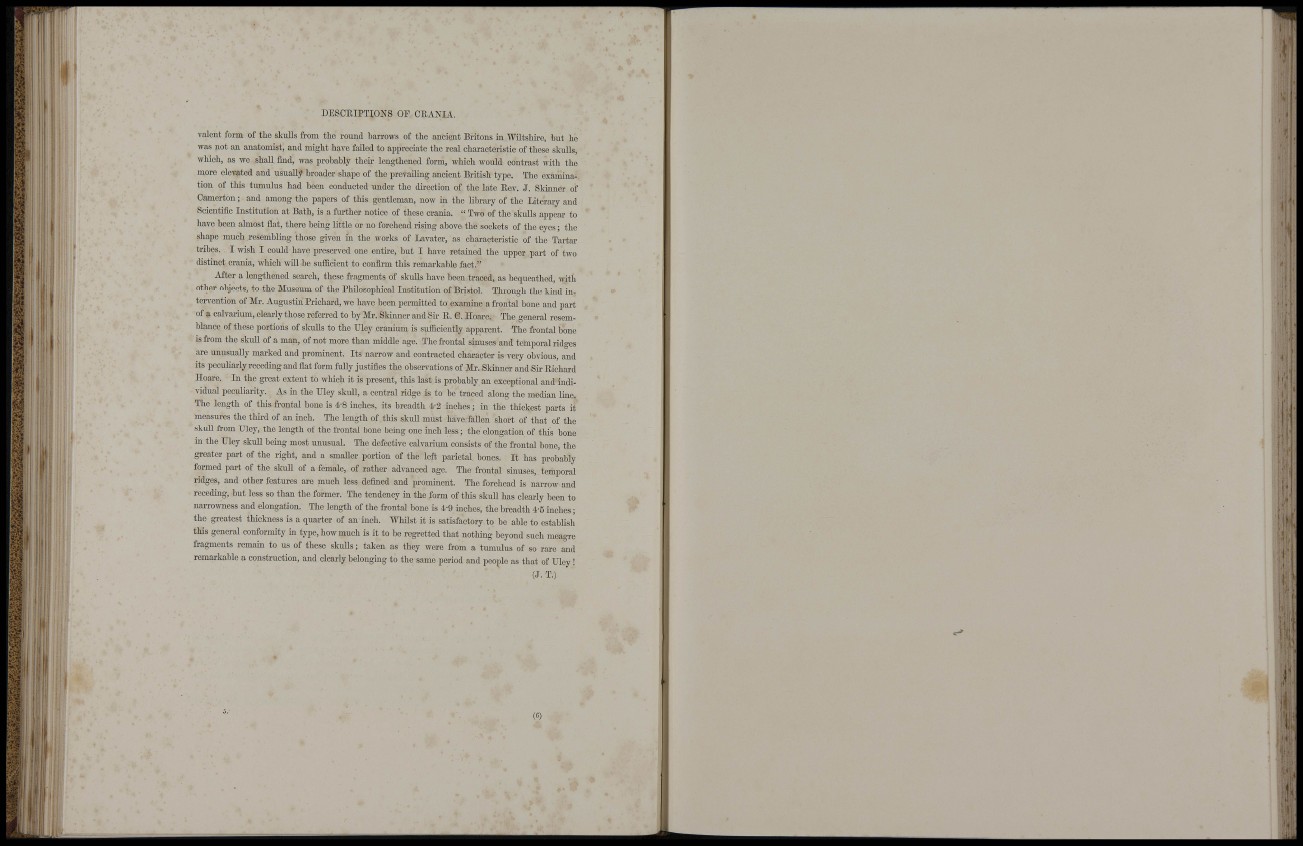
iJ
ll'i
DESCRIPTIONS OF CRANIA.
valont form of the skuUs from tlie round barrows of the ancient Britons in Wiltshire, but he
was not an anatomist, and might have failed to appreciate the real characteristic of these skulls,
which, as we shall find, was probably theii- lengthened form, which would contrast with the
more elevated and usually broader shape of the prevailing ancient British type. The examination
of this tumulus had been conducted under the dii-ection of the late Rev. J. Skinner of
Camerton; and among the papers of this gentleman, now in the Kbrai-y of the Literary and
Scientific Institution at Bath, is a fm-ther notice of these crania. " Two of the skulls appear to
have been almost flat, there being little or no forehead rising above the sockets of the eyes; the
shape much resembling those given in the works of Lavater, as characteristic of the Tartar
tribes. I wish I could have pi-eserved one entire, but I have retained the upper part of two
distinct crania, which wiU be sufficient to confirm this remarkable fact."
After a lengthened search, these fragments of skuUs have been traced, as bequeathed, with
other objects, to the Museum of the Philosophical Institution of Bristol. Through the kind intervention
of Mr. Augustin Prichard, we have been permitted to examine a frontal bone and part
of a calvarium, clearly those referred to by Mr. Skinner and Sir R. 0. Hoare. The general resemblance
of these portions of skulls to the Uley crauium is suflciently apparent. The fi-ontal bone
is from the skuU of a man, of not more than middle age. The frontal sinuses and temporal ridges
are unusually marked and prominent. Its narrow and contracted character is very obvious, and
its peculiarly receding and flat form fuUy justifies the observations of Mr. Sldnner and Sir Richard
Hoare. In the gi-eat extent to which it is present, this last is probably an exceptional and individual
peculiarity. As in the Uley skull, a central ridge is to be traced along the median line.
The length of this frontal bone is 4-8 inches, its breadth 4-2 inches; in the thickest parts it
measui-es the thii-d of an inch. The length of this skull must have faUen short of that of the
sk-uU from Uley, the length of the fr-ontal bone being one inch less; the elongation of tliis bone
in the Uley skuU being most unusual. The defective calvarium consists of the frontal bone, the
greater part of the right, and a smaUer portion of the left parietal bones. It has probably
formed part of the skull of a female, of rather advanced age. The fr-ontal sinuses, temporal
ridges, and other features are much less defined and prominent. The forehead is narrow and
receding, but less so than the former. The tendency in the form of this skull has clearly been to
nan-owness and elongation. The length of the frontal bone is 4-9 inches, the breadth 4-5 inches;
the greatest thickness is a quarter of an inch. Whilst it is satisfactory to be able to establish
this general conformity in type, how much is it to be regretted that nothing beyond such meagre
fragments remain to us of these skuUs; taken as they were from a tumulus of so rare and
remarkable a construction, and cleariy belonging to the same period and people as that of Uley !
(J. T.)
m.
11
iii- <:.
I
V|{ , ,
M;
i:i I
(C)
is- I ' f